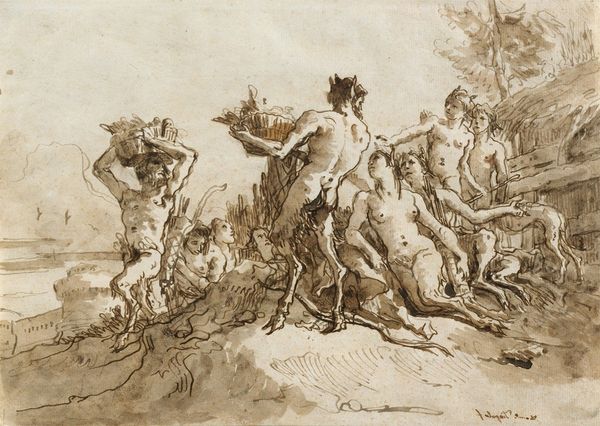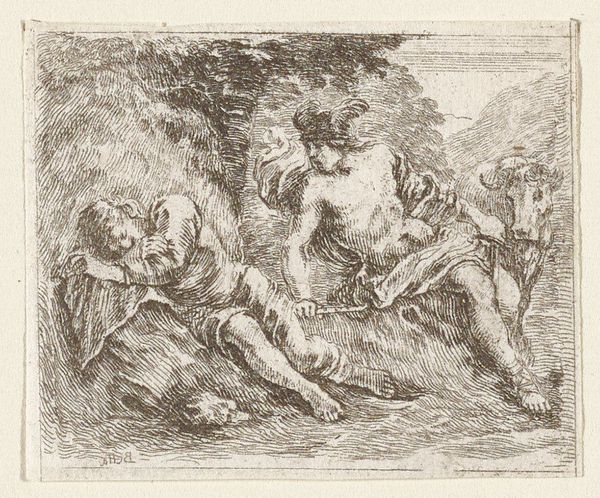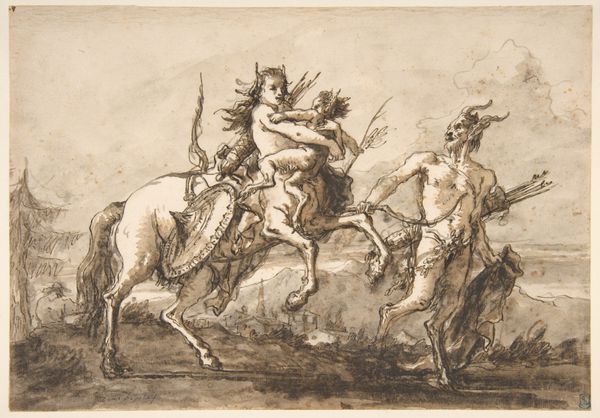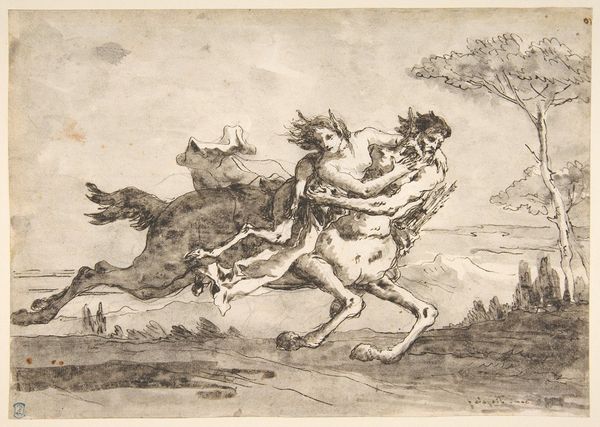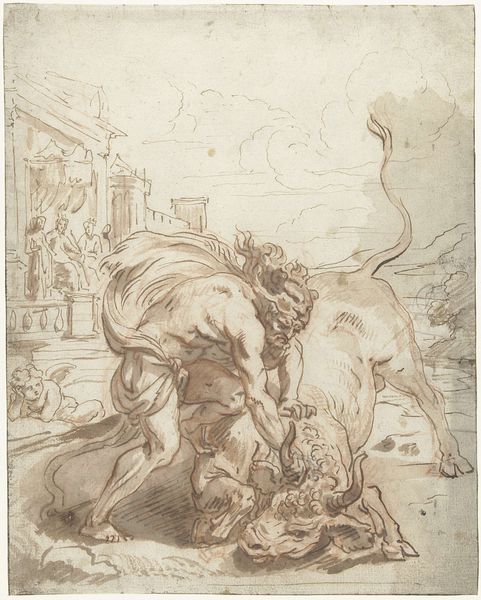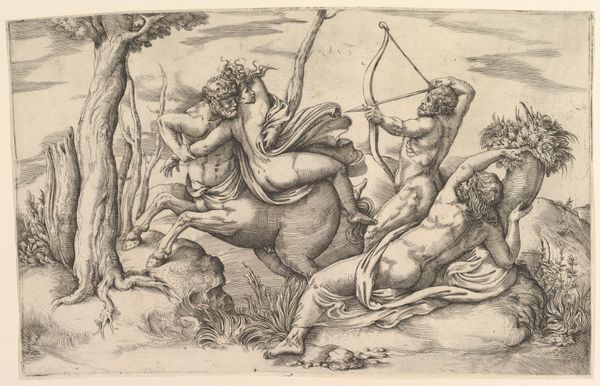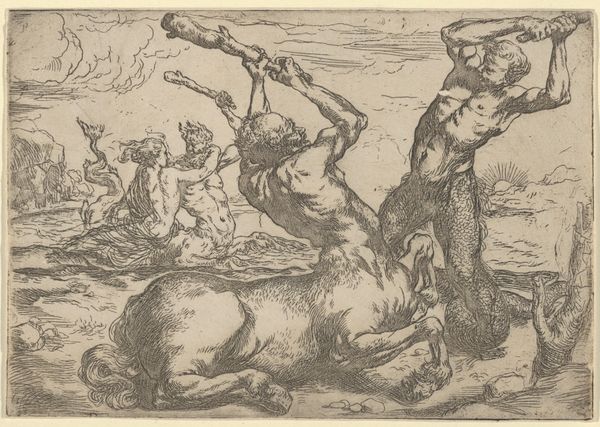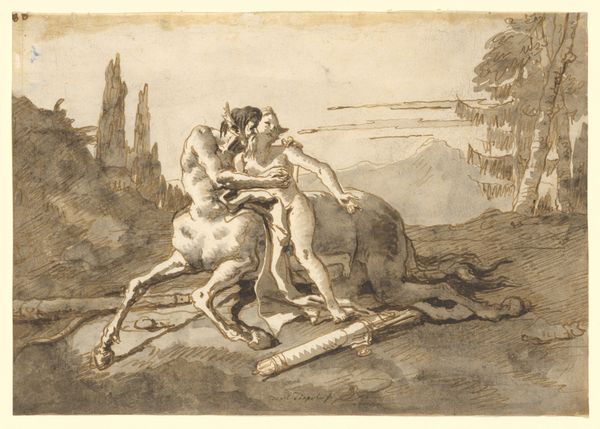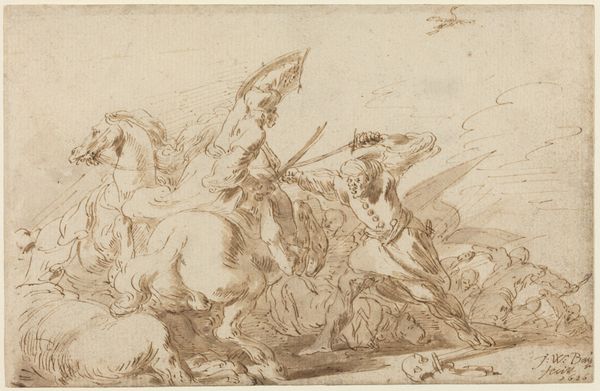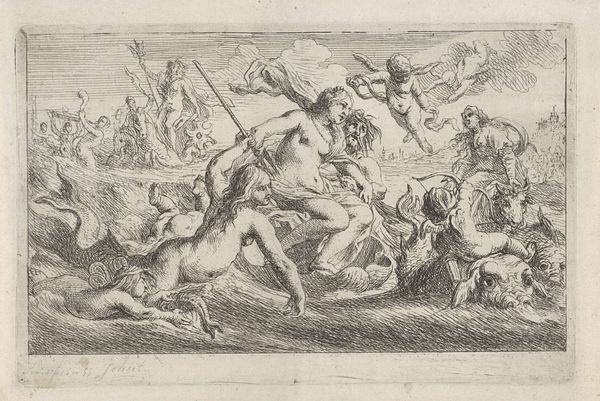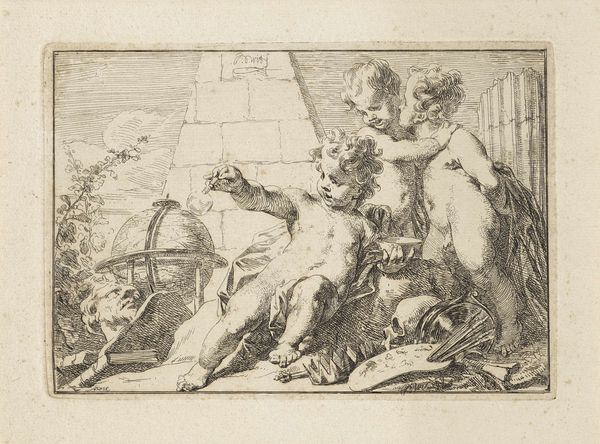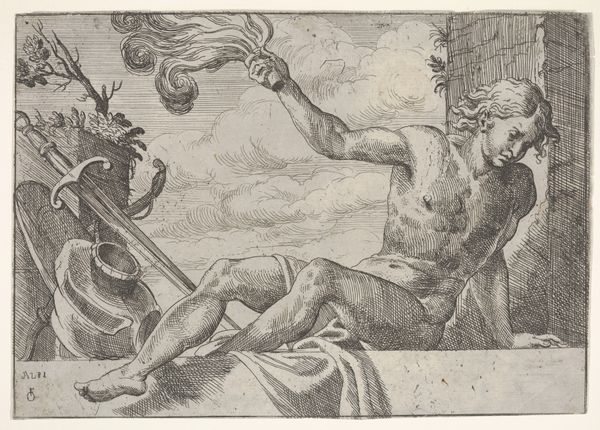
Copyright: Public Domain: Artvee
Curator: This drawing, rendered in ink, is attributed to Giovanni Domenico Tiepolo. It's titled *Centaur with a Club, and Two Satyrs* and thought to have been created sometime between 1727 and 1804. It depicts… well, what it says on the tin! Editor: A bit chaotic, isn't it? The dynamism of the lines really makes the figures jump out, almost aggressively so. There's a real sense of immediate action. The centaur and satyrs feel caught in the middle of something… a hunt, perhaps? Or an escape? The trees even seem to be fleeing, as though blown backwards. Curator: The satyrs are, of course, symbols of unrestrained pleasure, and the centaur is similarly liminal, embodying both human intellect and animal instinct. Their wildness suggests an eternal challenge to reason and order. Their presence in art has always offered a channel to explore humanity’s own fraught relationship to what civilization tries to tame. Editor: Which gets me thinking about the labor involved in creating this drawing. Notice the layered hatching technique? Each stroke represents labor. Tiepolo’s decision to employ the relative inexpensive means of ink on paper gives the artist almost immediate access to creation, contrasting, perhaps, with the time and material considerations required to make preparatory drawings for ceiling frescoes during the period. Curator: Absolutely. And ink, as a medium, speaks to a kind of immediacy that fresco, by its nature, cannot. It's almost like Tiepolo is using these mythological figures as symbols to explore a fundamental duality— between chaos and order, instinct and reason, preparation and… well, impulsive, wild expression. Editor: Looking closely, the ink application ranges from delicate, almost ethereal lines in the sky, to coarse hatching defining musculature and shadow. I wonder where Tiepolo obtained his ink, and if it was a self-grinding process in his workshop. Thinking of ink as a material good gives it weight— both literally and figuratively, imbuing his mythology with material reality. Curator: That materiality roots the symbolism, offering a tangibility often absent in pure allegories. We're left not with simple binaries, but with layered and embodied ideas about ourselves, made accessible through ink. Editor: An interesting glimpse, not only into a mythological landscape, but the physical circumstances under which the landscape was made.
Comments
No comments
Be the first to comment and join the conversation on the ultimate creative platform.
